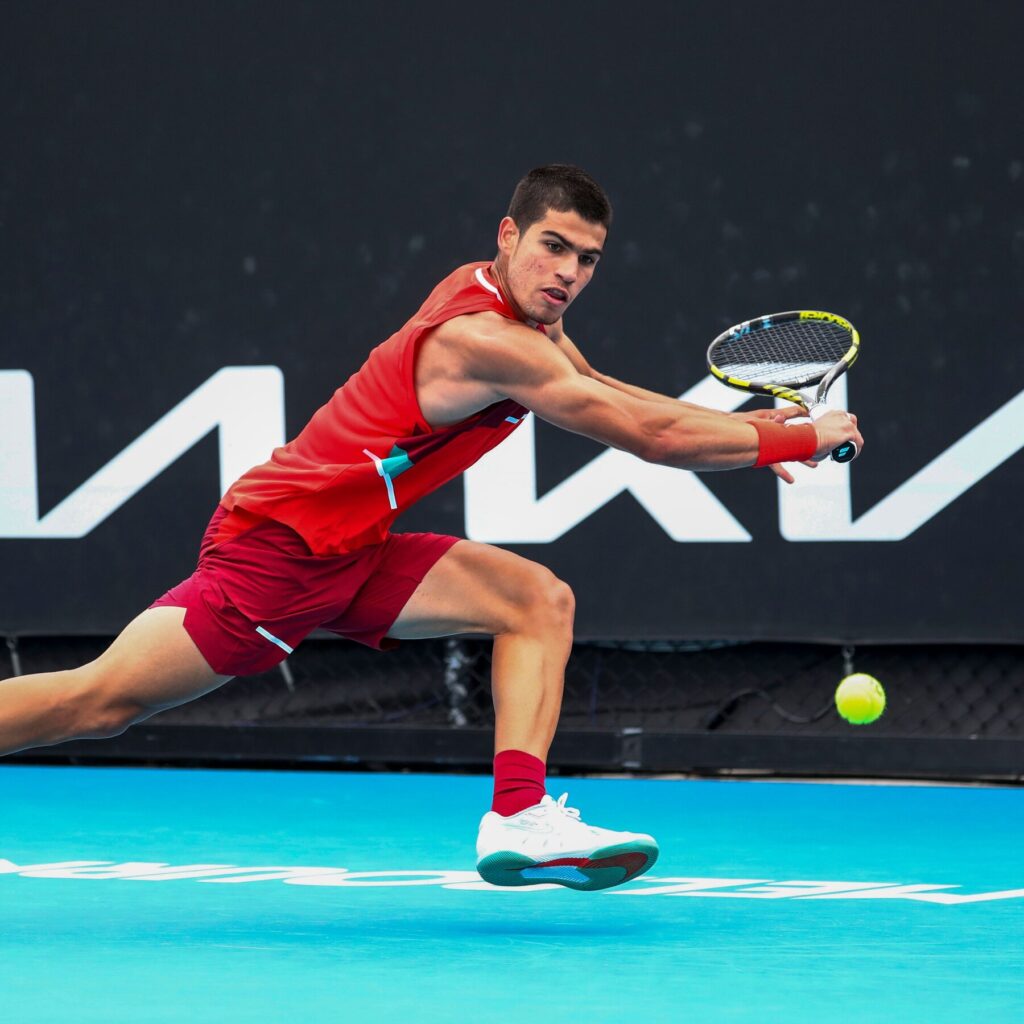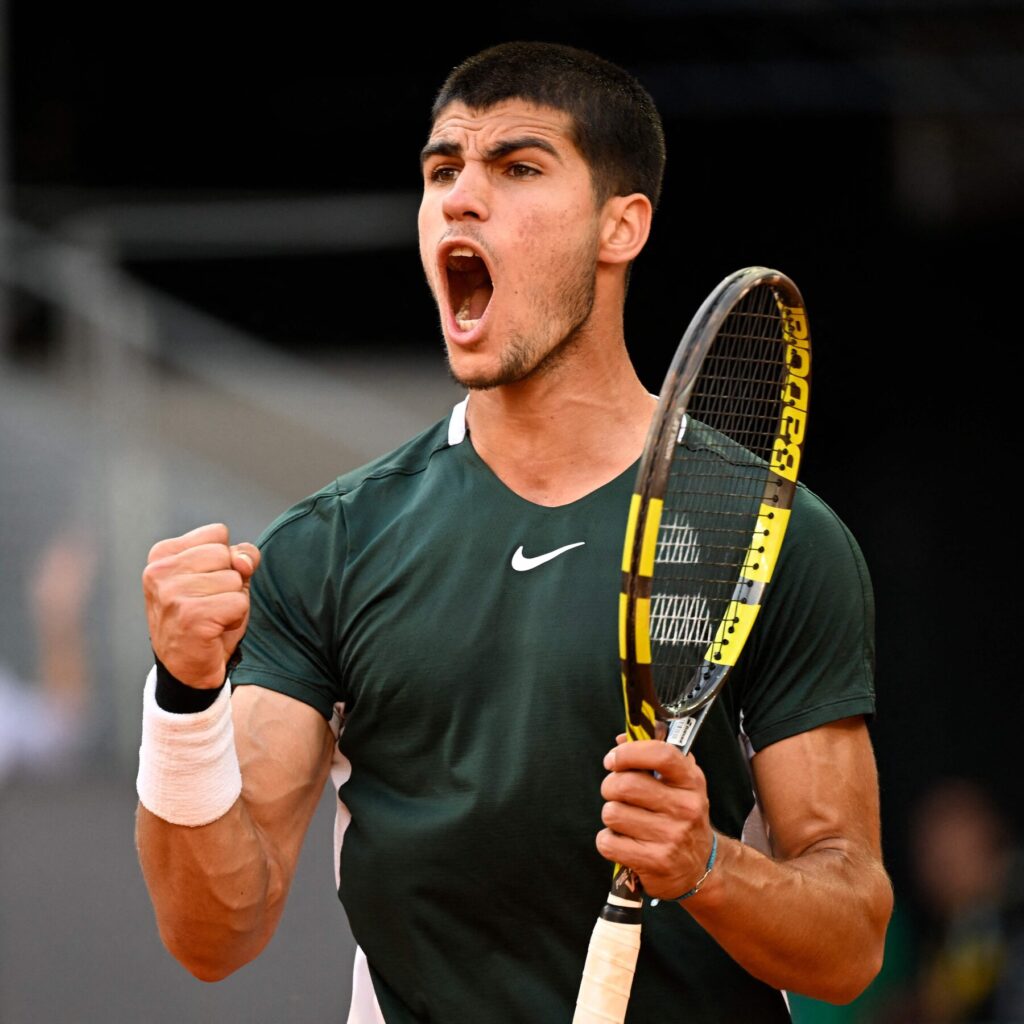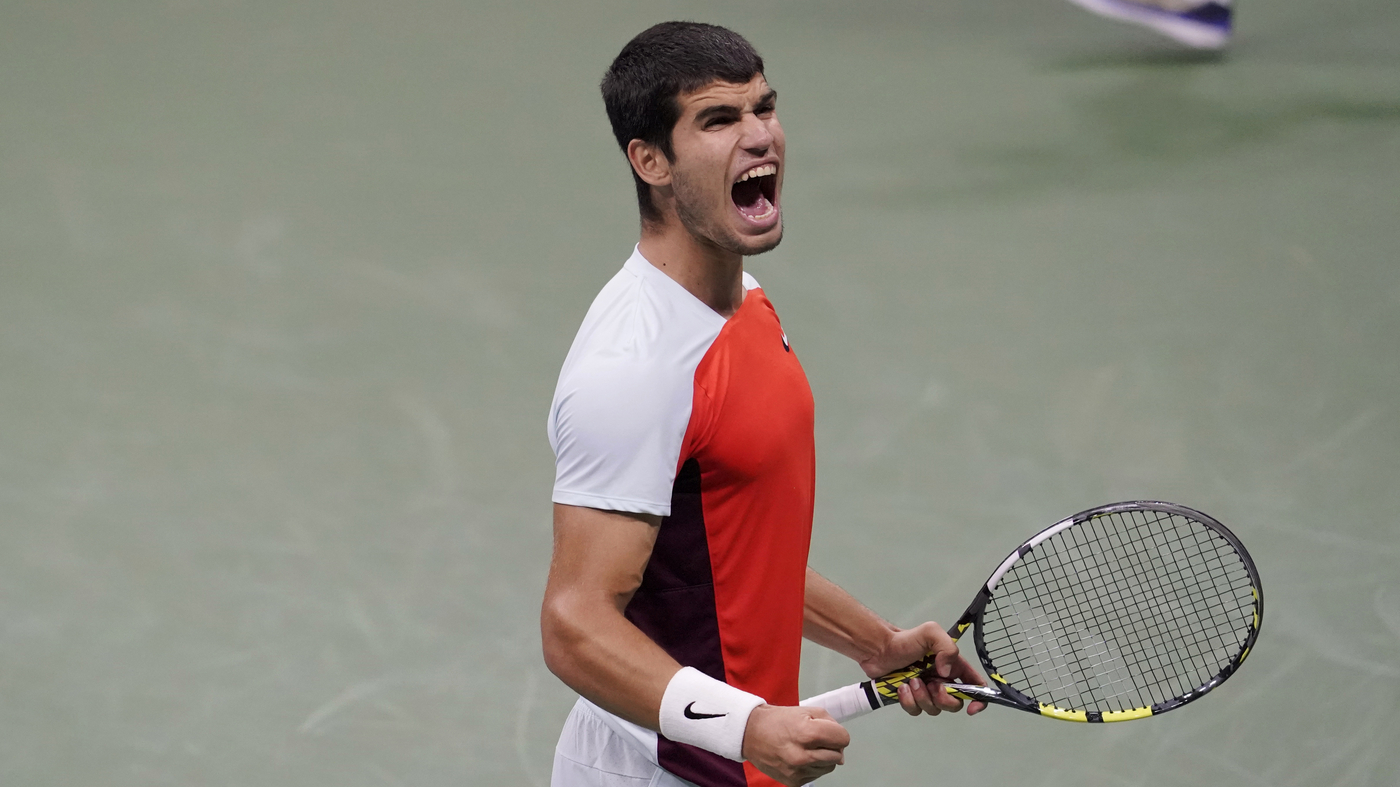
The Spanish tennis star Alcaraz is currently rated first in his age group in his own country, and he can’t wait to compete on the ATP tour. Read on, sports fanatics, to find out everything you need to know about Carlos Alcaraz, a young athlete with a bright career ahead of him.
What makes him the best tennis player?

Alcaraz won his first tournament when he was fifteen. He did this because he worked hard and was dedicated. He got to the semifinals of the French Open Juniors the next year. Even though he was good at tennis, he got tired and focused on school instead. He went to the University of Virginia, where he was team captain and won an individual doubles title with Artem Kuznetsov. This was the first NCAA team title for Virginia in 75 years. He returned to professional tennis in 2013 after his father in Spain encouraged him to do so. He now lives in Gijon, Spain. What is your favorite food? He says that anything with tuna in it is his favorite. What do you like to do besides tennis?
What inspires you? His family encourages him the most since they have always been supportive! What does your family think of you as a professional tennis player? They share his passion for the game and enjoy seeing him play.
A small intro to Alcaraz
Alcaraz’s birthplace is Madrid, Spain. His father, an avid tennis player, first got him interested in the sport. He started playing tennis at age three and entered his first tournament when he was six. As early as 1982, he took home his first international championship after dominating Montevideo, Uruguay. His first competition victory didn’t come until 2003 in Cali, Colombia. When he finally broke through in 2004, he won his first Grand Slam event at Roland Garros in Paris, France.
His speed shocked everyone.
It differs from timing a tennis player’s foot speed to timing an Olympic sprinter. A player typically begins their sprint to the ball with a small hop or a split step. However, the actual quickness at that point is in the eyes and head, trying to see or guess where an opponent is trying to hit his shot in a fraction of a second.
This might result in a little lean in the direction of the location discovered or estimated, followed by a swift first stride once the ball has left the adversary’s racquet. (Professional athletes practice this step frequently.)
Following that, a player makes what are known as “adjustment steps” just before touching the ball. To get close enough to the ball to strike or slice it with the sweet spot of the string bed, he dances with the tiniest steps. At this distance, he may safely extend his arm and racquet. None of the movements can be captured by a stopwatch app.
Winner of the grand slam
The young Spanish tennis player Carlos Alcaraz, barely 19 years old, has been referred to as a “phenomenon” or “sensation” for quite some time. With his four-set victory over the Norwegian Casper Ruud at the 2022 U.S. Open in New York, he added a Grand Slam championship and the world’s No. 1 status to his list of accolades. After winning in three sets, 6-4, 2-6, 7-6, Daniil Medvedev did a bizarre imitation of a goal celebration from a soccer video game. Bjorn Borg famously fell to his knees after winning a Grand Slam match. Alcaraz, amid the cheering crowd of over 23,000 tennis fans, quickly dropped to the ground, covered his eyes with his hands, and curled up into the fetal position. He was left to contemplate his feelings over that brief period.
When his effort doesn’t work

Even if Alcaraz’s efforts don’t pay off, he keeps his opponents on their toes by making them hit multiple “potential winners” to get a single point. This makes them have to decide quickly and figure out where to shoot. When that happens, mistakes start to appear.
Sinner played a well-balanced, high-quality game in the quarterfinal, but he still made 63 mistakes and only 61 right moves. Marin Cilic scored 66 of 45 good shots in the fourth round, and Frances Tiafoe scored 52 of 51 good shots in the semifinal. This doesn’t just happen by chance.
So many of the best baserunners of this generation are aggressive life and die by how well they defend. Before they make a mistake or find the right time to pull the motivation, they counterpunch and keep getting the ball back into play. But he always plays tennis with an offensive mind, even though he is a great defender. This tendency to switch from defense to offense may be related to how athletic he is. Still, there are also other major factors at play.
His training and hard work
Alcaraz made it through in the end. This can happen if you play a million hours of tennis in two weeks, and it did happen on Sunday. Even though he looked tired, he still pulled off most of his party tricks. He pinned Ruud back with vicious, angled groundstrokes, charged the net for running volleys, and beat his opponent with a good drop shot that Ruud could only laugh.
Does any of his weaknesses show themselves? Sure. Alcaraz can tune out his matches, as he showed on Sunday. This helped Ruud get back on track and get close to taking a 2-1 lead in the set. In five-set matches, he will have to be more sensible with his athletic moves since there will come a time when he can’t rely on his legs to get him out of trouble.
Now some of his achievements are the following:
- In the men’s singles final of the U.S. Open, Alcaraz prevailed over Casper Ruud in four sets.
- Alcaraz has the most victories of any player on the ATP Tour this season with 51. In terms of victories, he is five up of Stefanos Tsitsipas (46 wins).
- To get to his first Grand Slam final, Alcaraz had to win five sets against Marin Cilic, Jannik Sinner, and Frances Tiafoe. He logged 20 hours and 19 minutes on the court en route to the championship match.
- Since Rafael Nadal also won the French Open at 19 in 2005, Alcaraz holds the record for the youngest Grand Slam champion. Since Pete Sampras won the U.S. Open at 19 in 1990, he is also the tournament’s youngest champion.
- Since Novak Djokovic at Wimbledon in 2019, Alcaraz is the first player to win a Grand Slam after fending off a match point. There was a match point for Jannik Sinner versus Alcaraz in the quarterfinals, but Alcaraz managed to preserve it. At Wimbledon this year, Djokovic faced two match points before Roger Federer could defeat him.
WHAT PLACE DOES CARLOS ALCARAZ CURRENTLY HOLD IN HIS CAREER?
The latest rankings were released on September 12, exactly one day after Alcaraz won the U.S. Open, and it was then that he ascended to the top spot in the world. His current ranking, as well as his past rankings, can be found on the profile page of his ATP Tour account.
HOW MUCH PRIZE MONEY HAS ALCARAZ EARNED?
As of November 5, 2022, he has accumulated more than $9.4 million in prize money from the ATP Tour’s singles and doubles competitions. On his profile page on the ATP Tour, you can view the most recent updates to his prize money numbers.
WHAT ELSE DOES HE ENJOY OUTSIDE OF TENNIS?
Outside of tennis, Alcaraz’s hobbies include golf and football, and he considers himself a supporter of Real Madrid.
WHAT SOCIAL MEDIA PLATFORMS DOES CARLOS ALCARAZ USE?
Yes. As of November 5, 2022, he has an Instagram account with more than 2.1 million followers and an official Twitter account with more than 445,000 followers.
Some other players, like Alcaraz
Other players are just as quick, such as Australia’s Alex de Minaur, and other men win, such as Medvedev and Nick Kyrgios. However, even to a casual observer, they still have room for improvement in standard tennis skills like mental toughness, stroke execution, and consistency. Alcaraz sounds like a combination of a magician and a serial killer.
He advanced to the championship match by winning three consecutive five-set matches, beginning in the fourth round with a victory over 2014 winner Marin.

Next was a quarterfinal match against Italy’s rising star Jannik Sinner that lasted five sets, five hours, and put everyone to bed late. After Alcaraz won the first set, the second set’s 12th game featured a behind-the-back forehand so ridiculous it was almost offensive. What appeared to be a lucky shot was anything but.
By the time he had made it across the baseline to Sinner’s ball, he knew exactly what to do. There was a brief delay before he jumped and flipped his wrist to secure it. Instantaneous dagger and absurdity. This kind of shot would be used to sequence Alcaraz’s tennis match if he were a cartoon. To an extent, the subsequent impossibility was dulled by how unbelievable it all was. There was a complete 180-degree directional reversal, a split second of hesitation, then a full-speed dash to the service line for a backhand that ended the point. The pundits’ excitement was palpable. Ferrero is shown standing, laughing, with a dad-like “What are you going to do?” expression on his face.
Some of his Travel life
The next morning, Alcaraz didn’t leave Flushing Meadows until 5 a.m. A day and a half later, he played the semis against the American Frances Tiafoe. Former First Lady Michelle Obama came to watch Tiafoe, a 24-year-old powerhouse who beat Rafael Nadal in the fourth round. Alcaraz won. Nearly 24,000 people were in Arthur Ashe Stadium that night, and most screams made it clear that they wanted Tiafoe to win. Alcaraz played right through it without losing his focus or his racquet. He did this with respect and without mercy. In the end, he gave Tiafoe a real hug. Off the court, they talk a lot and have been talking since their match. “After that, he told some jokes,” Alcaraz says. “He’s funny.”
He knows his art
Alcaraz knows that the way he moves on the court is crazy. It’s the part of his game that he likes best. “I think I’m a guy who picks up things quickly,” he says. “I learn things quickly and work very hard. Every single day. I worked on top-notch precision movements for the past two years.”
Did he know he would win his first grand slam at the U.S. Open? He says, “I didn’t.” “I hadn’t thought about which one would come first.” How about the one after that? He grins. “I’d be happy to win in Australia, Wimbledon, or Roland Garros. A slam is always a slam.
Kids much younger than Alcaraz have been begging him for advice. In Spain, he can’t go anywhere without being seen. What he tells one new player is the same thing he tells them all. “You should just have fun with everything.” He smiles once more. When he checks out of the hotel, he will return to Spain for the Davis Cup. He doesn’t seem to be bothered by the change.











